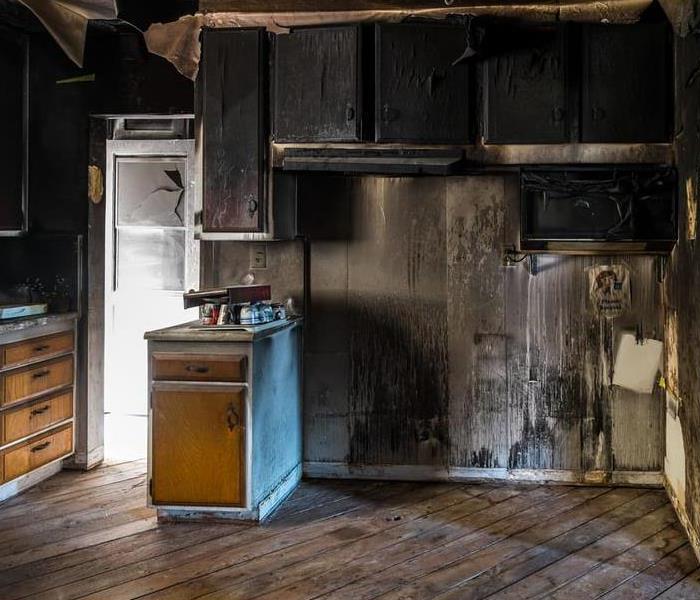Preparing Your Home for Fire Season!
5/8/2021 (Permalink)
- Create a defensible space around your home: A defensible space is an area around a building in which vegetation, debris, and other types of combustible fuels have been treated, cleared, or reduced to slow the spread of fire to and from the building. The Federal Emergency Management Agency (FEMA) recommends creating at least 30 feet of defensible space between your home and surrounding vegetation to reduce the potential for damage.
- Apply fire-retardant chemicals: Fire-retardant sprays can be applied to at-risk areas of your home and yard. Fire retardants are chemicals that are applied to materials to prevent the start or slow the growth of the fire. They decrease the ability of materials to ignite. These chemicals work by creating a barrier between the fire and the structure. The chemical creates a reaction that can help slow the fire.
- Limit roof combustibility: A "complex" roof (with lots of ridges and valleys) can be particularly susceptible to fire damage because wind can cause embers to catch on the ridges and valleys. In addition to applying fire-retardant chemicals, consider upgrading the materials used on your roof, regularly cleaning off debris like pine needles and leaves, and inspecting and replacing broken shingles.
- Clean your gutters: Routine removal of debris from trees and vegetation should be cleared out of gutters. Debris can cause structural damage to your gutters and even to your house, which may provide space for embers to blow in. Debris also can catch fire, particularly during the dry season.
- Protect your windows: A heat differential driven by an outside fire can cause the exposed glass to crack and even shatter inward. A window will break after one to three minutes of exposure to intense heat or flames. The California Building Code recommends that buildings constructed in wildfire-prone areas use dual-pane windows.
What You Can Do Until Help Arrives
SERVPRO recommends that after any fire damage situation, your primary focus should be safety:
- Is it safe to stay in the house?
- Electrical and "slip and fall" hazards are some of the most prevalent concerns.
- Only do activities that are safe for you to perform.
- Wet materials can be VERY heavy. Be careful!
What To Do After A Fire:
SERVPRO knows how overwhelming and stressful matters can be after a fire. Here are some simple steps that everyone should follow:
- Limit movement in the home to prevent soot particles from being embedded into upholstery and carpets.
- Keep hands clean so as not to further soil upholstery, walls, and woodwork.
- Place clean towels or old linens on rugs, upholstery, and carpet traffic areas.
- If electricity is off, empty freezer and refrigerator and prop doors open.
- Clean and protect chrome with a light coating of petroleum jelly or oil.
- Wash houseplants on both sides of leaves.
- Change the HVAC filter.
- Tape double layers of cheesecloth over air registers.
What NOT To Do After A Fire
- Don't attempt to wash any walls or painted surfaces or shampoo carpet or upholstery without contacting your SERVPRO professional.
- Don't attempt to clean any electrical appliances that may have been close to fire, heat, or water without consulting an authorized repair service.
- Don't use any canned or packaged food or beverages that may have been stored near the fire, heat, or water.
- Don't turn on ceiling fixtures if the ceiling is wet. The wiring may be damaged.
- Don't send garments to an ordinary dry cleaner. Improper cleaning may set smoke odor.
Residential fires can lead to unanticipated emotional distress in the ensuing days after the fire. You should not underestimate the challenge of evacuation, relocation, and rebuilding after a fire. Losing your home in a fire involves not only the loss of your residence, but also many other things of value such as photo albums, important documents, and treasured objects. Your home is your place of security, comfort, and safety. After a fire, this sense of security can also be lost and can disrupt the routine of your daily life.





 24/7 Emergency Service
24/7 Emergency Service
